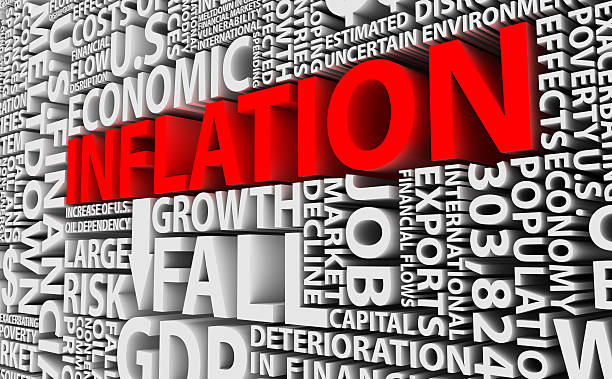Key insights from the week that was.
In Australia, the Q3 CPI printed at 1.2% (5.4%yr) for headline inflation and 1.2% (5.2%yr) for core trimmed mean inflation. The detail of the report highlighted that, although the disinflationary process remains intact, its pace is not as fast as Westpac and the RBA were anticipating. Indeed, on a six-month annualised basis, core inflation only edged lower Q2 to Q3 from 4.5% to 4.3%. In the quarter, major goods categories were stronger than expected, most notably automobiles and house purchase costs. Upside surprises were also seen within services, particularly ‘other recreational, sporting and cultural services’ – capturing cinemas, concerts and sporting events – which posted its strongest September gain since the introduction of GST in 2000, +3.4%.
The Commonwealth Rent Assistance, Child Care Subsidy and Energy Bill Relief programmes are providing some respite to stressed households. But ultimately, policy needs to bring inflation back to target if cost-of-living pressures are to fade. This is why Governor Bullock stated just before the CPI’s release that the Board “will not hesitate to raise the cash rate further if there is a material upward revision to the outlook for inflation.”
As outlined by Chief Economist Luci Ellis, the stronger-than-expected Q3 inflation print and the RBA’s clear messaging have led us to revise our view on the cash rate, with a 25bp hike to 4.35% now forecast for the November Board meeting. The resilience of the household sector to the tightening cycle to date, capacity constraints amid strong population growth as well as ongoing gains for wealth from housing also support a decision to hike. However, the RBA will also recognise that the labour market has turned and the risk of a price-wage spiral is receding. November’s decision to raise rates will therefore be finely balanced. And, in the months ahead, the RBA will closely scrutinise the evolution of both inflation and activity risks.
Offshore, central banks and Chinese stimulus dominated headlines.
The Bank of Canada held rates steady at 5.0% and unveiled new forecasts. The average annual GDP growth projections were cut by 0.6ppts to 1.2% for 2023 and 0.3ppt to 0.9% for 2024 but revised up 0.1ppt to 2.5% for 2025. However, year-end inflation for 2023 and 2024 was revised up, and the BoC now sees inflation returning to its 1-3% target band in 2025 rather than 2024. The statement also made clear that the Governing Council was attune to upside risks for inflation and was willing to raise rates if needed. It looks as though the BoC will tolerate above-target inflation in 2023 given the weak outlook for growth. But it remains to be seen if this patience will endure through 2024 if upside inflation risks materialise.
The European Central Bank subsequently kept its three key policy rates on hold at its October meeting, though President Christine Lagarde again noted inflation is expected to stay “too high for too long”. The ECB continues to believe that holding rates at their current level will allow the ECB to reach its inflation target. However, despite considerable uncertainty over the growth outlook and with financial conditions having also been tightened by changes in lending standards, Lagarde gave no indication about when rate cuts might occur when asked during the press conference. Given much of the easing in inflation in the September quarter came as a result of energy price base effects, the ECB is right to be cautious about the ongoing rate of disinflation.
Across in the US, Q3 GDP exceeded expectations growing 4.9% annualised in Q3. Personal consumption expenditure contributed more than half of total quarterly growth (around 2.7ppts), with strength evident across goods and services. A strong labour market and low 30-year fixed mortgage rates locked in during the pandemic are sustaining established households’ spending capacity, and being further supplemented by the remaining excess savings from the pandemic. However, confidence is weak and consumer caution over the outlook has risen of late.
It is worth noting that the quarterly profile for consumption has been inconsistent over the past year, leaving annual growth only marginally above the pre-pandemic decade average (2.4%yr compared to 2.3%yr). A similar assessment can be made for domestic demand overall, with annual growth currently 2.6%yr versus 2.4%yr pre-pandemic. With the labour market decelerating, confidence weak, and the full effect of financial and credit tightening to be felt, the message these results provide for 2024 and 2025 is that a material slowing of growth and inflation remains the most probable outcome. This would allow the FOMC to lower the fed funds rate through the period to stop a further tightening of financial conditions on a real basis and thereby minimise the risk of recession.
Speaking of mitigating downside risks, this week China’s Central Government announced stimulus measures worth RMB1trn, 0.8ppt of GDP. This is the first time a mid-year adjustment has been made to the fiscal deficit target since the Sichuan earthquake of 2008 and before that the Asian Financial Crisis. The stimulus will be used to fund disaster relief and infrastructure spending from Q4 2023 through 2024. With the funds to be raised by the Central Government, the cost of borrowing will be minimised and time delays between financing and investment kept to a minimum. Competition for the capital amongst the provinces is likely to keep the quality of projects high. Built into our growth forecast of 5.3% for 2023 and 2024 was an expectation of further stimulus broadly in line with that announced, so our forecasts are unchanged. Our concerns over the property sector also remain. To remove this uncertainty, authorities must first underwrite funding for developers then encourage households to step-up their demand. The eventual consequence will be a return of local government funding from land sales, reducing their need for debt issuanc
